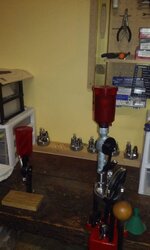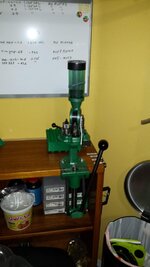Bronze Supporter
- Messages
- 19,728
- Reactions
- 55,079
I have been coaxed along to getting into serious debt to reloading recently by someone whom, themselves have just bought a single press starter kit (RCBS). He only has one caliber that he reloads for (300WM) and I will only have 2 .223 & 40S&W).
I have searched this kit and also found 4 & 5 hole turret presses. Seems to me that it is a lot of work (in the beginning) to keep removing & replacing dies on a single hole press and me being a NUB I just gotta know the reason experienced reloaders (unless mass producing many calibers) prefer the single presses?
TIA Peeps.
I have searched this kit and also found 4 & 5 hole turret presses. Seems to me that it is a lot of work (in the beginning) to keep removing & replacing dies on a single hole press and me being a NUB I just gotta know the reason experienced reloaders (unless mass producing many calibers) prefer the single presses?
TIA Peeps.
Last Edited:













